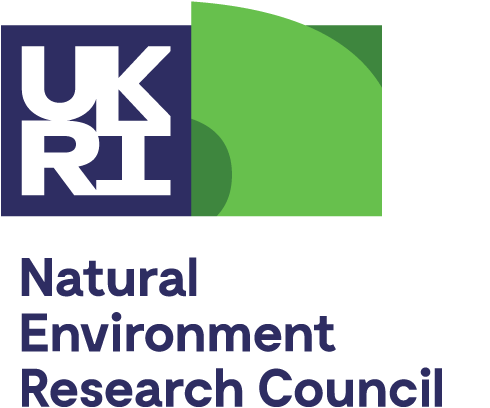Research staff
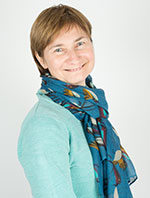
I am Principal Investigator, in charge of keeping the project on track and ensuring that everyone works together. Luckily, with such a great team, this is a pleasure. My own research interests involve particularly REE mobility around carbonatites, ion adsorption deposits and the responsible sourcing of REE.
Twitter: @FrancesWallCSM
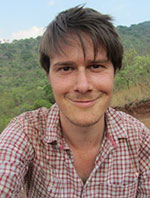
My interests are in the formation and composition of REE-bearing fluids and how these evolve to form ore deposits. My PhD addressed these interests in carbonatite-hosted deposits, and my role in SoS RARE is to extend this work to other deposit types and natural systems, principally through detailed mineralogy and fluid inclusion analyses. I have now moved on from my SoS RARE research position to an individual NERC Fellowship but I am still collaborating with the SoS RARE team.
Twitter: @s_broom_fendley
Ed Loye
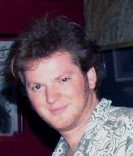
I am the project administrator for SoS RARE. My background is in HREE enrichment associated to carbonatites in Namibia. I'll be generally assisting Frances, making sure everyone is talking to each other, organising meetings, as well keeping an eye on the budget!
Robert Pell
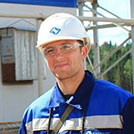
My research is looking into the sourcing of rare earth elements for the global manufacturing industry, examining ways to overcome social, environmental and security challenges.
Twitter: @rareearthsnews
Ed Loye

I am the project administrator for SoS RARE. My background is in HREE enrichment associated to carbonatites in Namibia. I'll be generally assisting Frances, making sure everyone is talking to each other, organising meetings, as well keeping an eye on the budget!
Michael Anenburg
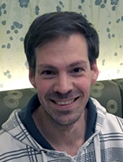
I am a postdoctoral researcher at the Experimental Petrology Lab, Research School of Earth Sciences, Australian National University. I will be synthesising carbonatite liquids with added REE and other elements of interest to try and understand the deep to mid-crustal processes that lead to the fertile or barren character of some carbonatites.
Twitter: @manenbu
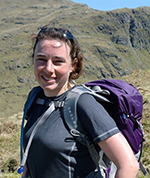
I am a senior geologist at BGS and have investigated REE enrichment in alkaline igneous rocks in a range of geological settings, from Greenland to Africa. I will coordinate work at the field case study sites for SoS RARE, with a particular focus on the alkaline magmatism and overlying weathered deposits in Madagascar.
Twitter: @kmgoodenough
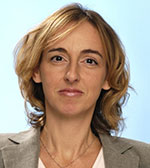
I am a senior process geochemist at BGS studying the fate and transport of trace elements and inorganic emerging contaminants in the environment and their impact on ecosystems and human health, through field observations, experimental studies and geochemical modelling. I will lead Work Package 4 "Processing, including bioprocessing, of easily leachable deposits".

I am a geomicrobiologist with experience in molecular microbial ecology and bioremediation, with a well-equipped laboratory and complementary projects on subsurface microbiology in relation to radioactive waste disposal. I will coordinate the geomicrobiology and bioprocessing team within SoS RARE.
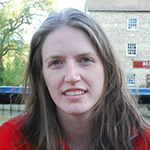
I am a geomicrobiologist with a background in geology. Most of my microbial experience is in method development and experimental design; concentrating on microbiological detection and characterisation in low-biomass 'extreme' environments. I have joined the SOS RARE team as a post-doctoral research fellow and I will be focussing on laboratory experiments to understand the role of microorganisms in the mass transfer of REE into solution.
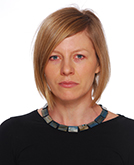
I'm a mineralogist/petrographer with expertise in material characterisation using electron beam instruments and specializing in fluid-rock interaction systems and experimentally induced chemical, mineralogical and textural transformations. For SoS RARE I will be involved in the mineralogical studies of the pre- and post-experimental samples at BGS.
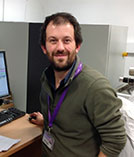
I am Reader in Geology at the University of Brighton, and will be leading SoS RARE Work Package 2 on the formation and exploration targeting of ion adsorption deposits. This will investigate the characteristics and genesis of REE-enriched weathering profiles, and the behaviour of REE on mineral surfaces.
Dr Guillaume Estrade
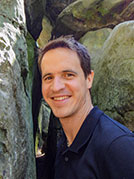
I received my PhD in metallogeny from Toulouse III Paul Sabatier University (in France) in 2014. My research focused on the formation of the rare-metal (HFSE and REE) mineralized Ambohimirahavavy alkaline complex in Northwestern Madagascar. The main objective was to understand the role played by magmatic and hydrothermal processes during the formation of the mineralization. I joined the SoS RARE team in Brighton as a post-doctoral research fellow in October 2015, to investigate the behaviour of the REE on mineral surfaces and as neo-formed minerals in weathering profiles overlying REE-bearing rocks. In October 2016 I moved back to Toulouse as 'maître de conférences’ but will continue to carry out research in association with the SoS RARE project.
Eva Marquis
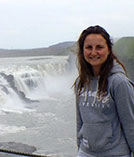
I have recently graduated from Cardiff University with a Masters in Earth Sciences in Geology, which incorporated a year abroad studying at the University of Wyoming, USA. My PhD is focusing on REE mobilisation during alkali granitoid weathering, supervised by Dr Martin Smith. This will involve investigating the igneous petrogenesis and hydrothermal alteration of alkali granitoids from Madagascar and their impact on subsequent weathering.
Dr Cristina Villanova-de-Benavent

Cristina has been studying supergene Ni-Co-PGE and REE deposits formed after weathering. She finished her PhD in December 2015, on the mineralogy and mineral chemistry of Ni-bearing Mg-phyllosilicates (so-called garnierites) from the Ni-laterite deposit of Falcondo, in central Dominican Republic, analysed by means of powder X-ray diffraction, optical and scanning electron microscopy, electron microprobe, transmission electron microscopy, Raman spectroscopy and X-ray absorption spectroscopy using synchrotron radiation. Cristina has been involved in the study of the mineralogy and geochemistry of REE-enriched karst bauxites from southern Dominican Republic and on Au-bearing listvenite deposits from Central Cuba. Formerly, she worked on Ti-Fe-V oxide deposits associated with anorthositic rocks in Angola. Cristina is continuing Guillaume's work to investigate the behaviour of the REE on mineral surfaces and as neo-formed minerals in weathering profiles overlying REE-bearing rocks.
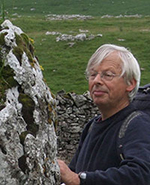
I am the Professor of Metamorphic Geochemistry at the University of Leeds, specialising in studies of fluid-rock interactions and their applications to understanding a wide range of crustal processes. Since the turn of the century I have focussed particularly on understanding metal transport in hydrothermal fluids, including the integration of fluid inclusion studies with theoretical and experimental approaches to understanding natural ore systems.
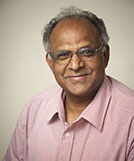
I am Professor of Applied Materials Science at the Institute for Materials Research, School of Chemical and Process Engineering, University of Leeds. I obtained my Bachelor of Engineering (Metallurgy) from the University of Roorkee in India in 1975, my Master of Engineering (Metallurgical Engineering) from the Indian Institute of Science in Bangalore in 1979, and my PhD and Diploma of Imperial College, from the Imperial College of Science & Technology, London in 1984. Prior to joining the University of Leeds, I also worked at the University of Sheffield and Brunel University in the UK. In March 1996 I joined the University of Leeds where my main research involves Sustainable Process design for minerals and Advanced Laser Glasses for laser applications. In these two subject areas I have published more 400 research articles in journals and peer-reviewed conference proceedings.
Dr David Banks
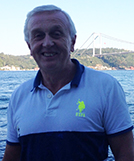
I am Principal Research Fellow: Geochemistry in the School of Earth and Environment specialising in crustal fluid geochemistry. I’m in charge of the Laser Ablation ICP-MS facility dedicated to analysis of fluid inclusion compositions. My main role in SoS RARE is in analysing rare earth-bearing fluids to determine the concentration and ligands responsible for transport of REE. I am one of the few people to have analysed REE-rich fluids directly and we plan to analyse well constrained fluid inclusions from a number of different geological settings using LA-ICP-MS. This work is being done in collaboration with Camborne School of Mines and McGill University, Montreal. Here at Leeds, I am co-supervisor of Delia Cangelosi’s PhD project.
Professor Steven Banwart

I hold the exciting new position of Integrating Chair in Soil, Water and Agriculture Research at the University of Leeds, and am an expert on reactive processes in soil and water systems. I was one of the first researchers to quantify the scale dependence of mineral weathering, based on laboratory, field and modelling studies of mining environments. I will coordinate the processing research for the SoS RARE project.
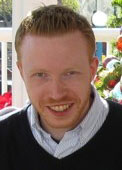
My background is theoretical minerals physics, performing quantum mechanical calculations to determine the properties of minerals. My role in this project is to determine thermodynamics properties of rare earth minerals, investigate the interaction of REE with clay minerals, study their speciation in solution and develop potentials for classical simulations.
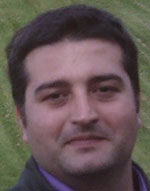
I received my doctoral degree in chemical engineering from the Polytechnic University of Cartagena (Spain). In 2011, I joined Prof Jha's group at the University of Leeds as a postdoctoral research fellow, and I was awarded a Marie Curie Intra-European Postdoctoral Fellowship to develop sustainable processes for the extraction and refining of critical materials in 2013.
My tasks in the SoS RARE project will focus on the selective separation of REE using ionic liquids as sole extraction agents or diluted in 'environmentally friendly' solvents. I will also contribute to the determination of the potentiometric spectrum for rare earth ions separation from oxide mixtures using ionic liquids.
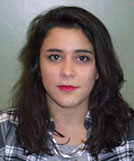
I completed my undergraduate study at Paul Sabatier University, France with a year abroad at the University of Leeds in Earth Science, from where I have just graduated with a Masters by research. My work is on aspects of fluid inclusions and fluid composition associated with the HREE-enriched carbonatite at Huanglongpu deposit, China. For my PhD, I will be investigating REE-enriched carbonatites and fluid chemistry, supervised by Dr David Banks and Professor Bruce Yardley.
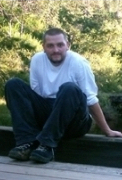
I am a postdoctoral researcher with a broad experience investigating biogeochemical processes. My role in SoS RARE is to investigate flow through leaching with inorganic solutions via experimental and modelling techniques.

I am the Professor of Materials Simulation in the Materials Department at Sheffield, and was previously at UCL and before that at Harwell. I will coordinate the research team on computational modelling at the atomic scale. The team will use a combination of ab initio and classical simulations to calculate thermodynamic properties of minerals, complexation effects and surface processes.
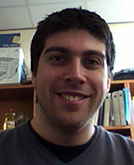
I am an expert in atomic scale simulation using both classical and ab initio methods. I have experience of geological systems, molecules and fluids, and the interfaces between them. In the project I will be part of the team designing a new classical forcefield for rare earth ions in solution and minerals and then modelling their interactions with new potential additives for fractionation.
Dr Maria Romero-Gonzalez
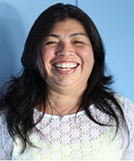
I am an Environmental Chemist with expertise on processes at the microbe-mineral interface. I am leading the experimental programme on REE complexation for biogeochemical fractionation and mass transfer of REE mineral dissolution processes with the view to integrate data into models for the transport of REE in the environment.

I am Associated Professor in the Department of Engineering Science at University of Oxford. Within SoS RARE, I will be working to understand the role of microbes in production of ion adsorption deposits and to investigate potential environmentally friendly leaching processes. I have expertise in molecular environmental microbiology, synthetic biology and single cell Raman biotechnology. I am developing SimCells (simple and simulated cells) which can be potentially designed to carry out biosensoring, bio-catalyzing and biomining in a robust and reliable way, and making a series of biosensors for the detection of environmental contaminants and toxicity. As one of the pioneers who have utilised Raman micro-spectroscopy for the study of microbes at the single cell level, I employ these tools and techniques to study bacteria-chemicals and bacteria-surface interactions.
Alex Crawford
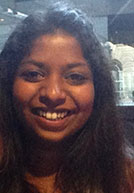
I have just graduated from the University of Newcastle with a Masters in Petroleum Geochemistry. My PhD will study the geochemistry of rare earth elements and their solubilisation and mobilisation from easily leachable mining deposits. I will be developing a modelling approach to in situ heap leaching for industrial application that can be applied to a wide variety of mine sites and engineered leaching conditions.
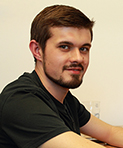
My expertise is in the area of atomistic simulations of solutions and inorganic materials, such as minerals. In the project, I apply classical simulation methods to investigate the speciation of REEs in aqueous solutions and identify selective chelating agents for extraction alongside experimental groups. In addition, we use simulations to understand surface ion adsorption and dissolution processes.
Dr Sarah Pepper

I am a Chemist with experience in studying the fate and transport of lanthanides and radionuclides, including technetium in aqueous environmental systems and developing novel detection methods for these metals. Most recently, I have been investigating the use of silica-based ion exchange resins for the removal of uranium and other problematic radionuclides from waste streams. As part of SoS RARE, I will be investigating the role of organic ligands and the processes involved in the leaching and incorporation of REE from ion-adsorption clays.
Dr Daniel Atencio
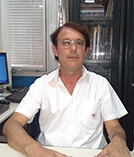
Daniel Atencio was born in São Caetano do Sul County, São Paulo State, Brazil, on May 12, 1959. A geologist (1982), Master (1986), Doctor (1991), Associate Professor (1999) graduated from the Universidade de São Paulo (USP), he has been a lecturer of the Instituto de Geociências, USP, since 1984. He has been the Brazilian representative on the Commission on New Minerals and Mineral Names (CNMMN) / Commission on New Minerals, Nomenclature and Classification (CNMNC), International Mineralogical Association (IMA), since 1990. He took part in the description of 30 new minerals approved by IMA. The mineral atencioite was named after him. He is the author of the book Type Mineralogy of Brazil (2000), and co-author of the Enciclopédia dos Minerais do Brasil (2013-). He works as supervisor of the X-ray Diffractometry Laboratory of the Instituto de Geociências, USP. He has providing counseling on master’s dissertations and doctoral theses, besides a great number of scientific initiations and course conclusion reports in the area of Geosciences.
Dr Marcelo Barbosa Andrade
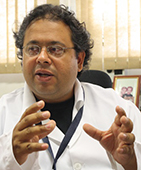
I am a postdoctoral research associate at the Sao Carlos Institute of Physics, University of Sao Paulo, and also a research associate at the University of Arizona. My research focuses on the characterisation of mineral and synthetic compounds based on X-ray diffraction and complementary methods (Raman and infrared spectroscopy, electron microporobe analysis and neutron diffraction), and I have characterised 7 new mineral species.
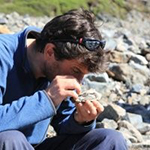
I work on the origins and mobility of rare elements in alkaline and peralkaline igneous rocks. I study how rare metals, including REE, become concentrated in magmas, and how post-crystallisation processes modify and mobilise them. I contribute to SoS Minerals by exploring how lanthanides are transported in alkaline and peralkaline rocks by studying the mineralogy, texture and isotopic composition. I will also determine whether luminescence can fingerprint REE minerals, underpinning 'smart' sorting methods.
Nicky Horsburgh
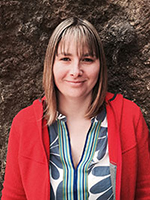
I completed my undergraduate study at St. Andrews University in 2009, and since graduating I have been working as an Engineering Geologist. For my PhD I will be investigating Laser and X-Ray Luminescence off REE ore minerals, supervised by Professor Adrian Finch, Professor Animesh Jha and Professor Frances Wall. I will be looking at whether luminescence can fingerprint REE minerals and be adapted to develop 'smart' sorting methods.
Dr Anouk Borst

My research focusses on peralkaline igneous rocks and associated rare metal deposits. During my PhD at the Geological Survey of Denmark and Greenland I explored the magmatic and hydrothermal evolution of REE, Zr and Nb mineralised nepheline syenites in the Gardar province, Greenland, using detailed mineralogy and isotope geochemistry. As part of SoS RARE, I will extend these studies to other Gardar intrusives, using the lanthanide isotope systems (Lu/Hf and Sm/Nd) to fingerprint the sources of critical metal enrichment and their remobilisation in the subsolidus environment. We will also employ micro-analytical techniques including use of synchrotron radiation to identify important REE-hosting phases.


